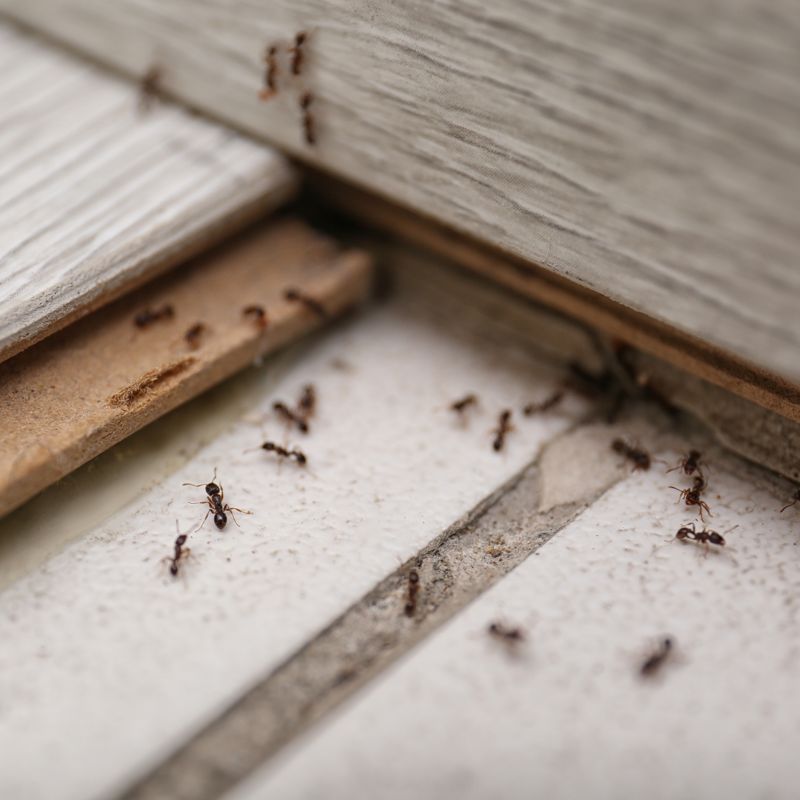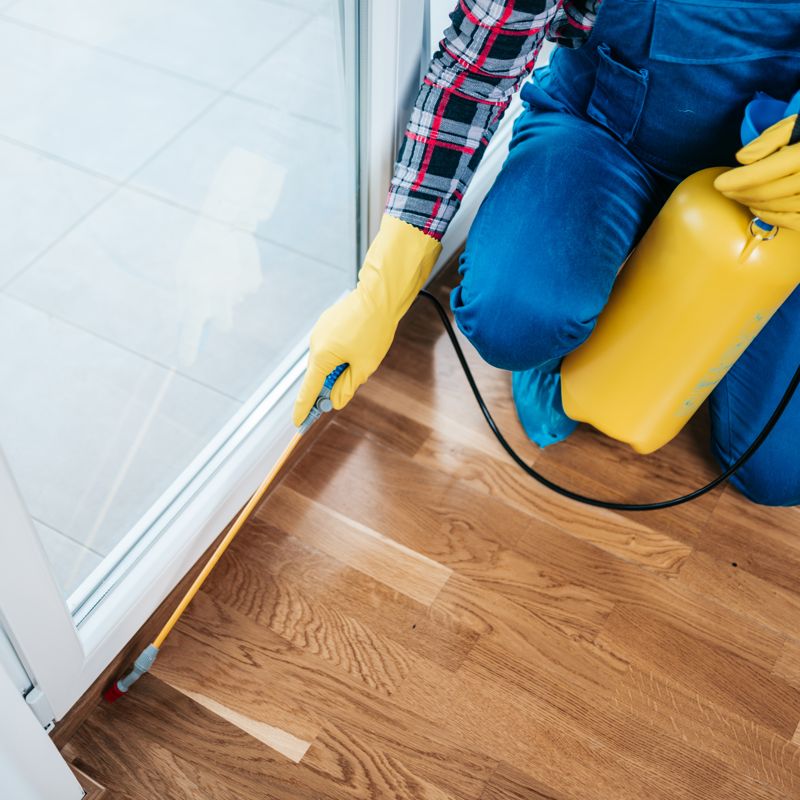
How To Tell If Your Long Island Home Has A Flea Infestation
If you are a new pet owner, or new to having a flea problem, you may have trouble telling whether or not you have a flea infestation in your Long Island home. Today, we'll look at how to identify fleas and how to tell if you have fleas in your home or some other pest. Once we cover the basics of flea identification and detection, we'll explore the reasons why fleas get into homes and, more importantly, how to get rid of fleas. Here you will find all the necessary information to diagnose a flea problem and learn how to apply steps to deal with fleas. If you want to speak to someone with training and experience in dealing with fleas, remember that we're only a few clicks or a phone call away. A&M Quality Pest Control provides industry-leading pest control in Long Island. We have the answers you're looking for.
Is This A Flea?
There are many insects that can come into your Long Island home. If you're unfamiliar with fleas, you may wonder if an insect in your home is a flea, or you may wonder if you've found a flea on your pet. Here are a few tips to help you diagnose your pest problem.
- A flea is not much more than a speck. At full size, it is about ? of an inch in length, though some species are significantly smaller. They're so small that some residents that are familiar with fleas mistake tiny flea species as baby fleas. But baby fleas are not fleas at all; they're wiggly worms. It is only after the pupae stage that they turn into six-legged insects.
- If it jumps, it is a flea, right? Not necessarily. You could have a springtail problem. Springtails are moisture pests that spring into the air like fleas. They also look similar. The primary difference is that fleas are dark brown and springtails are multicolored. You may also tell the difference in that springtails don't survive long indoors and they won't infest your living room furniture like fleas do. You also won't find springtails leaping up to attach to the skin of your lower legs, ankles, and feet.
It is helpful to know what a flea looks like, but it is not essential in diagnosing whether or not you have a flea infestation. There are many ways to tell that you have a flea problem. Some are subtle. Others are obvious.
How To Tell If You're Dealing With A Flea Infestation In Your Home
- Fleas bite. That is an easy way to tell that you have fleas in your home, right? Unfortunately, other pests bite too. So how can you tell that fleas are the pests biting you?
- Flea bites tend to appear on lower legs, ankles, and feet.
- Flea bites appear on the back or sides when fleas have infested a couch. Keep this in mind.
- Flea bites are irritating, so they will likely have scabs due to constant itching.
- Flea bites look much different than bed bug bites. If you have bed bugs, the bites will look like they follow a path across your body, and they will appear near your head. Bed bugs are attracted to carbon dioxide.
- Flea bites aren't the only way to detect a flea infestation. Here are a few more helpful ways to tell that you have a flea control problem.
- You may find fleas on your cat or dog. As you inspect with a flea comb, the fleas will appear for a moment and then disappear into the hair or fur. While incredibly small, they are visible, particularly on a pet with white coloration.
- You may find flea dirt, which is the feces of adult fleas. It will look like tiny black flecks.
- You may actually see fleas springing about inside your home. They may leap up from a carpeted floor, and also from smooth tiled floors in your bathroom. They are easier to see when they spring up from a light-colored bathroom tile.
- You trap fleas to detect them in your home. We provide a helpful tip for trapping fleas in the next section under home remedies. Flea traps are helpful when you have a mysterious infestation.
Whether you see fleas or you don't see them, take steps to address your infestation. Wash your pet's bedding in hot soapy water. Wash your linens and bedspreads. Put your pet's bed or blankets in the dryer for thirty minutes. High heat eliminates fleas in all stages of development. Vacuum your floor regularly until your flea infestation is corrected. Consider visiting your veterinarian and learning about strategies and products used to correct flea infestations. If you continue to have an issue, or you'd like to avoid all of the hard work of dealing with flea control, remember that A&M Quality Pest Control can address your infestation for you.

Why Choose A&M Quality Pest Control?
Quality Service, Every time
-
Emergency ServiceEmergencies don't wait, and neither should you. Contact us now!
-
Satisfaction GuaranteeWe'll make sure you're completely satisfied - it's our guarantee.
-
Same-Day HelpGet a pest professional out fast with our same-day appointments.
-
Insured Company
Have peace of mind knowing our team is fully licensed, insured, and vetted.
Why Won't These Fleas Go Away?
There are many reasons why fleas won't go away. Some have to do with fleas, and others do not. It is helpful to understand the building blocks of a flea infestation because you may alter the conditions that have led to your infestation and stop those fleas.
- Fleas are robust pests that can survive indoors. Some pests can't live in your home because they can't find a suitable food source. Fleas eat blood. While they prefer dog and cat blood, they can bite humans if needed.
- Home remedies are rarely a remedy. The internet is filled with bad advice regarding fleas. We could give a long list of examples, but one that clearly demonstrates the issue is the use of lamps, plates, dish soap, and water. The idea is that fleas are attracted to heat and will leap toward the light bulbs in the lamps (desk lamps work best). When they fall, they land in a soapy water solution in a plate underneath the light bulb. Does this work? Yup. You'll have lots of fleas land in your solution. The problem isn't that it doesn't work. The problem is that it doesn't stop an infestation. The fleas in your home will easily reproduce faster than your traps will eliminate them. Ideas like this can help you monitor flea activity, but don't trust them to arrest an infestation.
- Fleas are complicated pests that can outsmart you. You can go to your veterinarian and find out what products work to control fleas and still not successfully control a flea infestation. These products can fail for a myriad of reasons.

Our Reviews
Our Reputation Speaks for Itself
-
"Extremely Professional"
Extremely reliable when spring broke we had a small issue with an influx of bugs and it was taken care of without question. Extremely professional, easy to get a hold of, and easy to speak to. Would recommend.
- Dame O. -
"Reliable Pest Control"
The pests are completely gone now, and I'm incredibly satisfied with their service. I highly recommend A & M to anyone in need of reliable pest control. Thank you for a job well done!
- Charles C. -
"Excellent Service"
Excellent service, highly recommended. The tech was professional, punctual, and knowledgeable. Use these guys for all your pest control needs, you won't be disappointed.
- Collin C. -
"Highly Recommend"
It was a great experience and a great company, and I readily recommend it!
- Erica K. -
"Excellent Company"
I feel great knowing I can call them whenever an issue arises. Thank you guys so much! I'm so glad to have found such an excellent pest control company run by great people!
- AM S. -
"Reasonable & Effective"
This year I decided to spray and my neighbor recommended Matt A & Pest Control. A & M Pest is reasonable in price and effective, this year the family has been able to enjoy the yard.
- Josh T. -
"Responsive & Professional"
A&M was extremely responsive, professional, and a pleasure to do business with... You won't be disappointed!
- Joseph C. -
"Goes Above and Beyond"
Alex was very thorough, and reassuring and also went above and beyond during the appointment for my home.
- Amy D.
